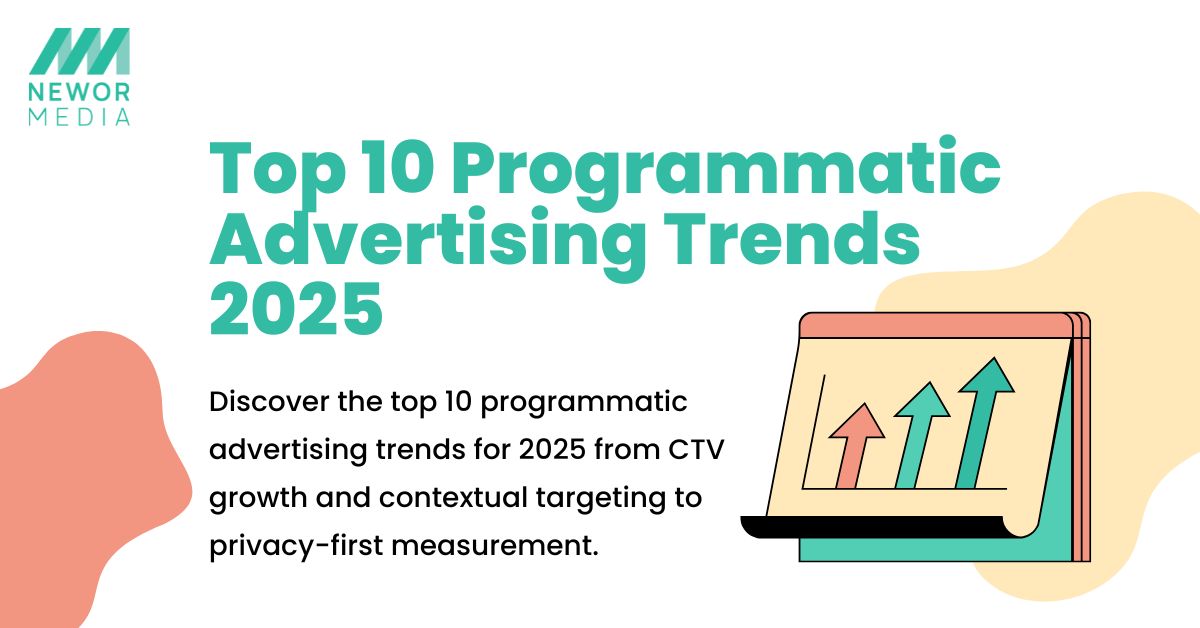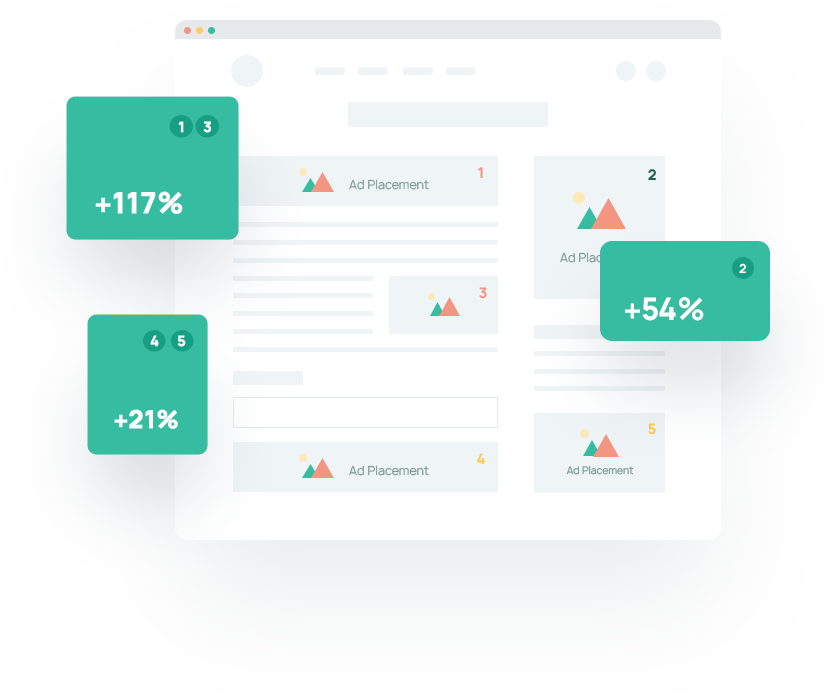The programmatic advertising landscape continues to evolve—fast. What started as an efficiency tool for media buying is now a key player in every major digital advertising strategy. And in 2025, the changes aren’t slowing down.
As brands demand more control, transparency, and ROI from their media spend, programmatic is adapting—with smarter tools, more automation, and tighter privacy standards. Whether you’re a publisher looking to boost revenue or a brand-side buyer optimizing for performance, staying on top of programmatic trends is essential.
Let’s dig into the top 10 programmatic advertising trends shaping 2025—and what they mean for you.
AI-Powered Optimization Gets Smarter (and More Transparent)
AI has been part of programmatic ads for years, but 2025 marks a shift toward explainable AI. Platforms are beginning to show advertisers and publishers why certain decisions are made—like why a specific user was targeted or why a bid was rejected.
The emphasis is on clarity. With increasing pressure for transparency, AI tools are moving from “black box” to “glass box.” Expect better optimization with more insights on how your budgets are being used.
Contextual Targeting is Back—in a Big Way
With third-party cookies finally phased out in most major browsers, contextual targeting is stepping up as a strong alternative. But this isn’t the keyword-matching of the early 2010s. Today’s contextual engines understand sentiment, emotion, and nuance using natural language processing.
Instead of following users around the internet, advertisers are aligning ads with the moment—what the user is consuming right now. For publishers, this shift creates more value in high-quality, well-labeled content.
CTV and Programmatic Video Lead the Pack
Programmatic advertising growth is increasingly tied to video—and more specifically, Connected TV (CTV). As consumers shift to streaming platforms, advertisers are following their attention.
In 2025, CTV isn’t just a “nice to have”—it’s a core part of most omnichannel strategies. Inventory is becoming more programmatic, and measurement tools are improving, giving marketers more confidence to invest.
Expect more ad dollars flowing into mid-roll, pause-screen, and shoppable video formats across platforms like Roku, Hulu, and FAST channels.
Privacy-First Measurement Solutions Take Priority
With stricter data regulations and the cookie crumble in full effect, measuring campaign success without invasive tracking is a hot topic. Programmatic trends in 2025 are focused on building robust privacy-compliant measurement tools.
Think: cohort-based analytics, modeled conversions, and publisher-provided identifiers (PPIDs). Advertisers are looking for solutions that give insight without compromising trust.
Platforms offering accurate, privacy-first performance reporting will win—both in revenue and reputation.
Retail Media Networks Go Programmatic
Big retail players—Amazon, Walmart, Instacart—have been quietly building out their ad networks for years. In 2025, those networks are scaling with programmatic infrastructure. Brands can now buy ads directly on retailer websites, apps, and even in-store screens—often tied directly to purchase data.
Retail media is no longer just search ads on Amazon. It’s video, display, and sponsored placements across the web, powered by shopping intent. Expect more DSPs integrating retail inventory this year.
Sustainability and Green Media Buying Emerge
Sustainability isn’t just for product packaging anymore. In 2025, advertisers are increasingly asking: What’s the carbon footprint of my media buy?
Enter green media buying—a growing programmatic advertising trend where brands prioritize low-emission ad delivery paths, energy-efficient DSPs, and partners committed to sustainable practices.
Publishers who can show carbon transparency in their supply chain may gain an edge, especially as major brands add sustainability KPIs to their campaigns.
Creative Optimization Becomes More Dynamic
Creative isn’t static anymore. With dynamic creative optimization (DCO), programmatic ads in 2025 can tailor the visuals, copy, and CTAs based on real-time data—without manual versioning.
Creative platforms are becoming more plug-and-play with DSPs, enabling advertisers to test hundreds of variations with minimal setup. For publishers, this means higher-performing campaigns and potentially better CPMs.
It’s not just what ad runs—but which version, and when, that determines success.
Supply Path Optimization (SPO) Gets More Granular
As the programmatic advertising supply chain matures, advertisers are asking: Am I getting the best value from my partners?
SPO isn’t new, but in 2025 it’s more detailed than ever. Buyers are digging into everything—from bid duplication and auction mechanics to SSP performance and publisher-direct access.
This is prompting platforms (like us at Newor Media) to offer more transparent, high-efficiency paths that cut waste and improve yield for both sides.
First-Party Data Collaboration Gains Steam
Without cookies, first-party data is king. But not everyone has enough of it to fuel a full programmatic strategy. The solution? Collaboration.
2025 is seeing a rise in clean rooms and data-sharing partnerships, where brands and publishers safely combine first-party data for mutual benefit. It’s privacy-first, but powerful—especially when paired with contextual or cohort-based targeting.
For publishers, having logged-in users, newsletter subscribers, or loyalty data is more valuable than ever.
Smarter, Simpler Programmatic Interfaces
The final trend isn’t about new tech—it’s about better UX. One of the biggest shifts in 2025 is the demand for simplified, user-friendly programmatic tools. The days of clunky dashboards and confusing line items are numbered.
Both advertisers and publishers want smarter automation, better presets, and intuitive reporting. Whether it’s a self-serve DSP or a yield analytics dashboard, usability is becoming a major competitive edge.
At Newor Media, we’re seeing this trend first-hand. Publishers don’t want to decipher a dozen metrics—they want clear insights, actionable recommendations, and platforms that just work.
Wrapping It Up
So, what is programmatic advertising in 2025? It’s cleaner, smarter, more privacy-forward, and increasingly omnichannel. It’s evolving alongside consumer habits, regulatory pressures, and tech innovation—all while continuing to deliver real results at scale.
If you’re a publisher, staying ahead means embracing contextual tools, owning your first-party data, and choosing partners who simplify the complex. If you’re an advertiser, success comes from leaning into automation—without losing sight of transparency and brand safety.
Either way, programmatic advertising growth is showing no signs of slowing down. And the trends shaping 2025? They’re making the future of digital advertising a little more efficient—and a lot more human.
Want a closer look at how Newor Media helps publishers stay ahead of the curve in programmatic?
Let’s talk. We’re always here to simplify, support, and scale what works.


6 Comments
Comments are closed